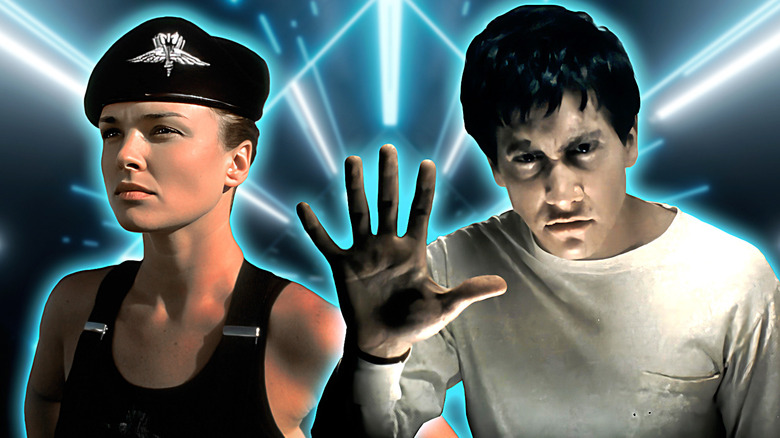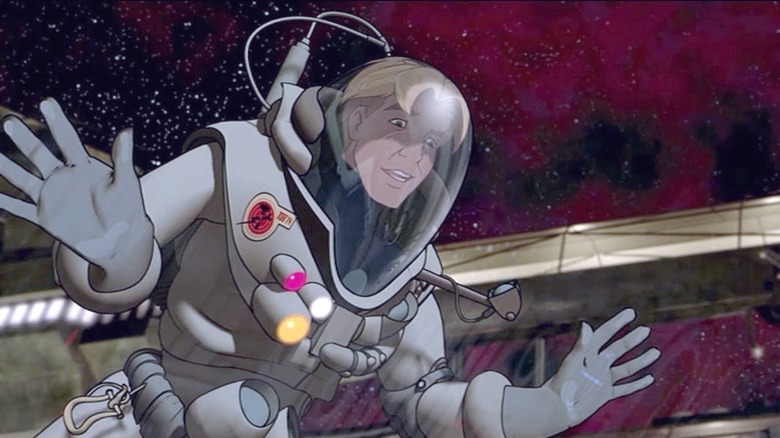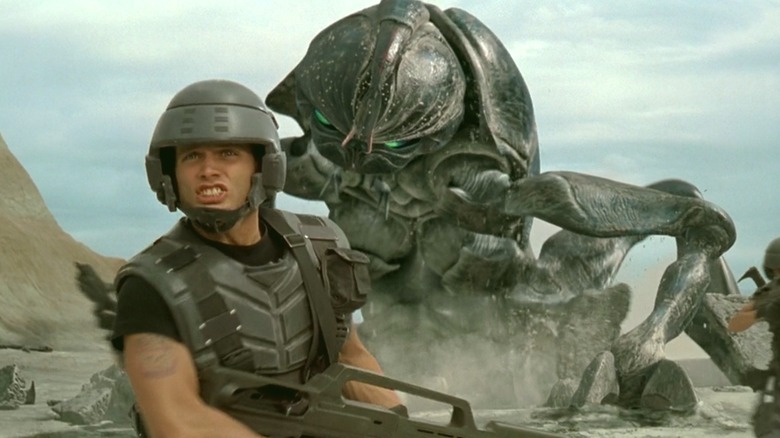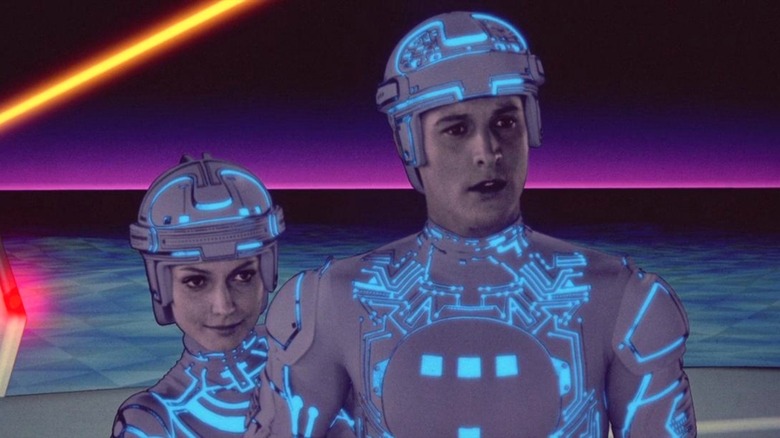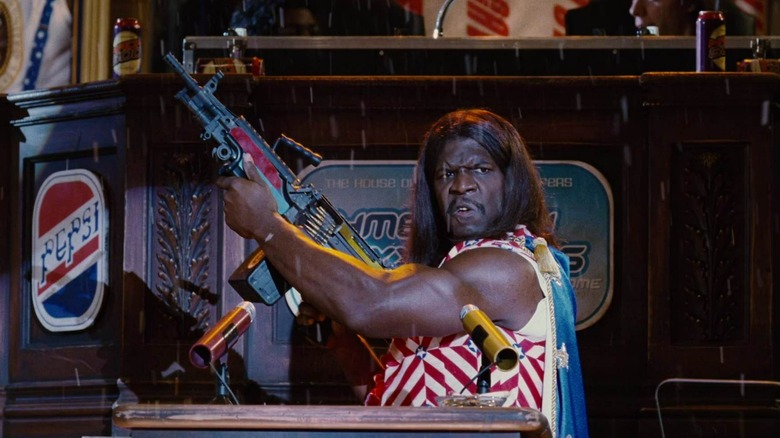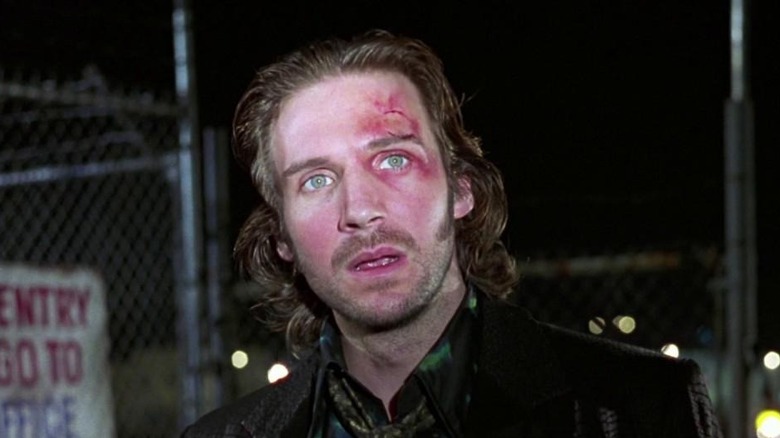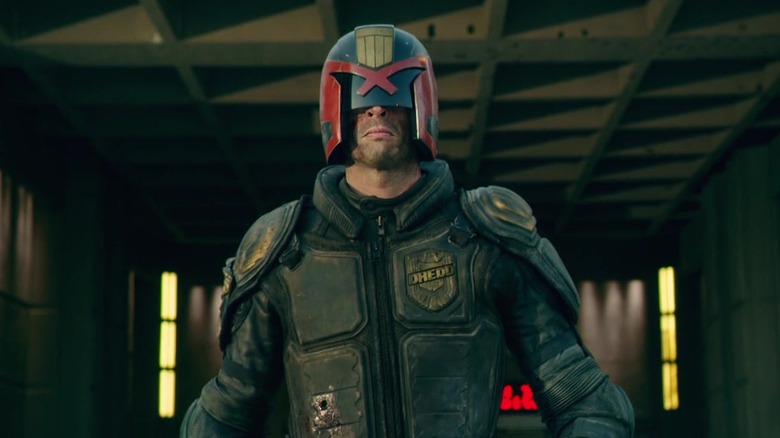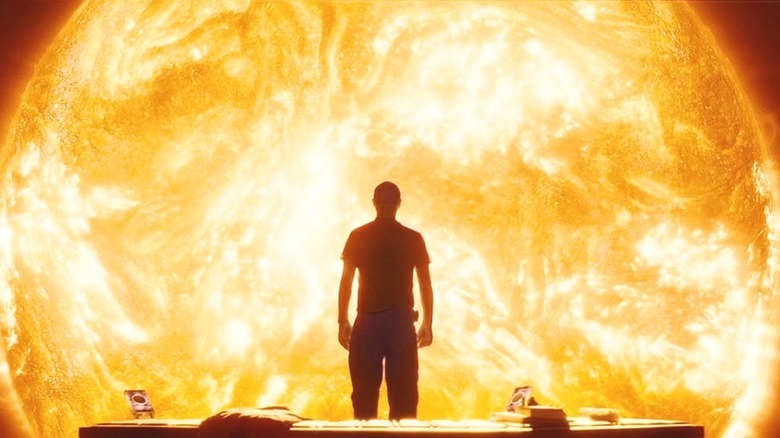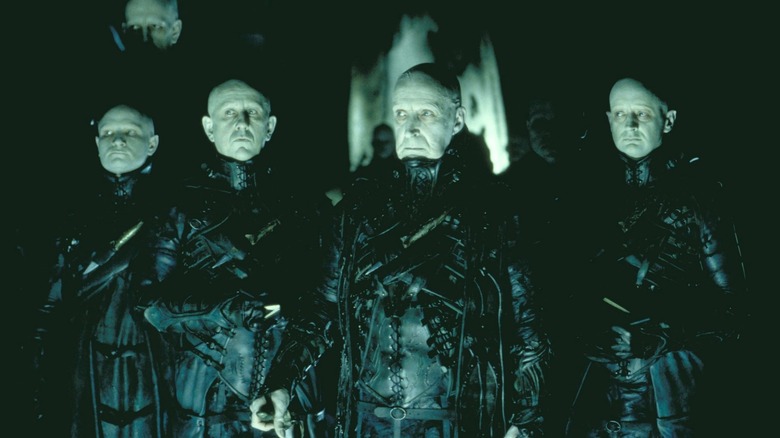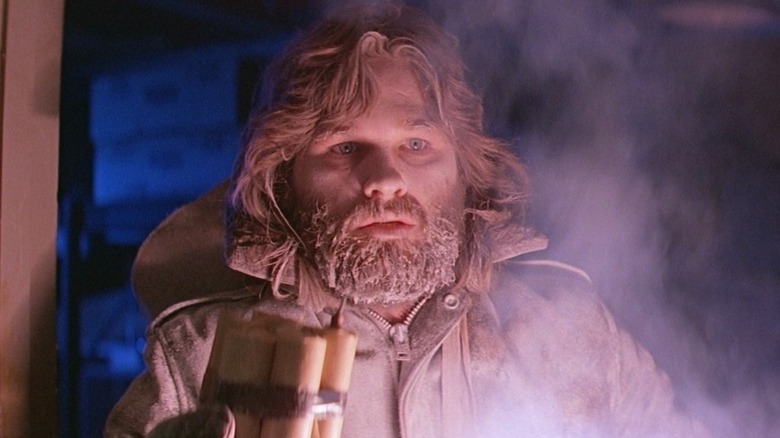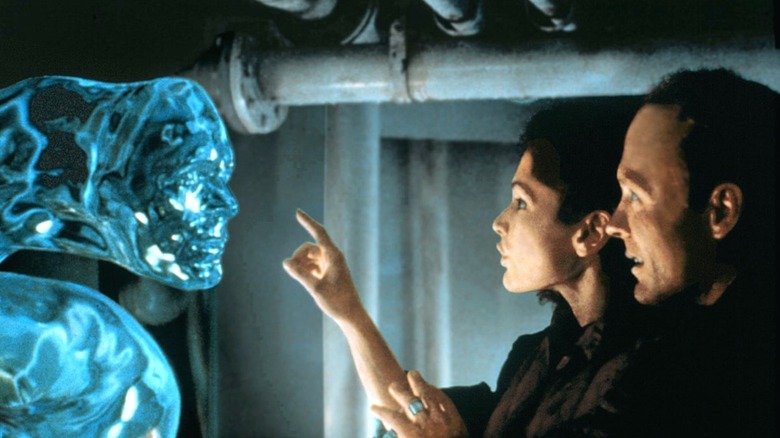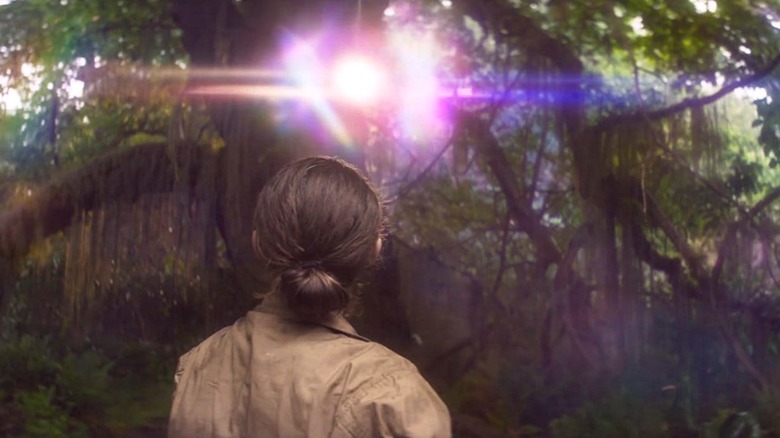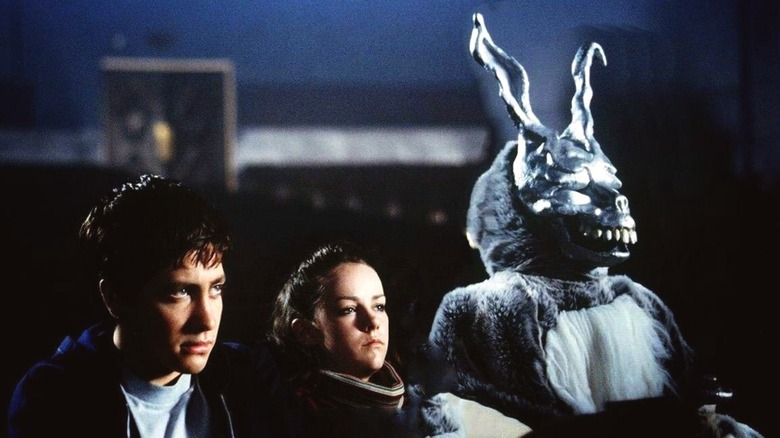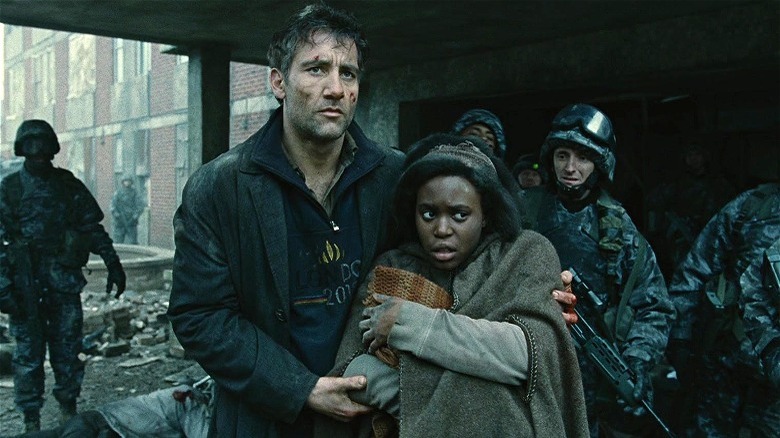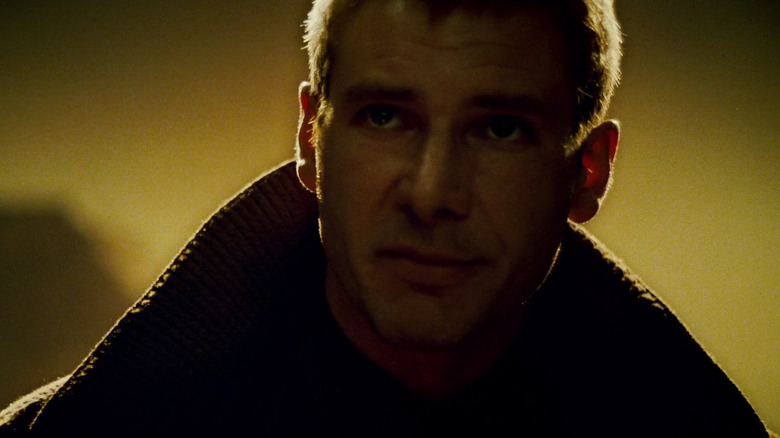Sci-Fi Box Office Bombs That Are Actually Worth Watching
Science fiction has been a part of cinematic history since the beginning. Some of the earliest movies employed special effects to bring audiences to the Moon in "A Trip to the Moon" or to futuristic cities in "Metropolis." The genre has expanded significantly since those early days, making up a good chunk of the cinematic marketplace. Still, not every sci-fi flick is as successful as "Avatar," "Star Wars," or "Avengers: Endgame" — many fight to break even.
For a movie to bomb, it has to earn less than its break-even point. Conventional wisdom says that you can calculate how much money a movie needs to break even by taking the film's production budget and doubling it to account for marketing, but some insiders and outlets report that a movie's break-even point is about 2.5 times its budget.
Sometimes, a crummy sci-fi flick will bomb, but sometimes, those flops go on to be reappraised. Some even have come to be known as the best the genre has to offer. There's a good chance that a science fiction movie you've loved for years absolutely bombed when it first premiered. For whatever reason, the genre doesn't always do well financially. Some of the biggest bombs may surprise you, as they're objectively fantastic films.
Titan A.E.
"Titan A.E." was the last film director Don Bluth released under the Fox Animation banner, and the movie bombed so badly it killed the studio. There are several reasons for its failure, but ultimately, a movie that cost $75 million only pulled in $36.7 million internationally, ensuring its enshrinement as a box office bomb. Regardless, the film is a spectacular achievement in early CGI combined with traditional hand-drawn animation.
"Titan A.E." was ambitious, and while it didn't attract audiences, it remains a cult classic beloved by those who watched it. The film centers around Cale Tucker (Matt Damon) as he's thrust into the middle of an interstellar conflict that began with the destruction of Earth and continues as he hunts down the titular planet-creating spacecraft designed by his father.
It's a true adventure film that follows Cale as he works with various alien allies in his quest not simply to save the world but also to recreate it from scratch. "Titan A.E." has its fans, but it's relatively obscure these days, having been buried by far more successful contemporary animated content.
Starship Troopers
Ask just about anyone in the U.S. military and there's a good chance they've read Robert A. Heinlein's "Starship Troopers" at least once in their career. It's a brilliant book set in the future, and while it's a military sci-fi novel, it's satirical and all about fascism. Director Paul Verhoeven's 1997 adaptation didn't do well for several reasons, but primarily, the film shares the same themes as the novel while being narratively different from the book in almost every way.
Despite this, "Starship Troopers" is everything you want out of a sci-fi action movie — soldiers deploy to alien worlds and take on gigantic, deadly "bugs" capable of effortlessly tearing people apart. The gore is akin to anything the 1980s released with an R-rating, and the character development is fluid and invests the audience in everyone's fates.
"Starship Troopers" uses lots of CGI, complex sets, and complicated costumes, making its $105 million production cost understandably high. The film only made $121.2 million at the box office, failing to break even. "Starship Troopers" is a cult classic these days, and while it failed financially, it managed to spawn a franchise consisting of four sequels, two TV series, and multiple video games and comics.
Tron
"Tron" holds an indelible place in popular culture thanks to its early adoption and integration of 2D CGI coupled with practical effects, backlit 2D animation, and live-action. "Tron" wasn't the first movie to use these technologies, but it's the most famous early example. Unfortunately, the film's ambition got in the way of box office dominance, and while it broke even, it was a financial disappointment.
In an era when a video game cost a quarter, the "Tron" arcade game made more money than the movie. Despite this, "Tron" holds a special place in peoples' hearts, as it's considered a classic that ultimately spawned an equally unsuccessful (but no less beloved) sequel 28 years after the first movie's release. "Tron" is undoubtedly dated in the visual effects arena, but upon release, it was a bold experiment that didn't attract the same level of attention in cinemas that it did in the home video market.
Even when it hit theaters in 1982, critics showered it with praise. Roger Ebert gave the film four stars in '82, calling it "a technological sound-and-light show that is sensational and brainy, stylish, and fun."
Idiocracy
Following his sleeper success with "Office Space," director Mike Judge created a sci-fi comedy that struggled to find a distributor. Eventually, "Idiocracy" found an audience, but it took almost two years and a lot of work. It finally hit theaters in 2006, long after its completion, and it only made it to seven American cities with no promotional posters, trailers, or press kits.
It played in only 130 theaters on its first weekend and barely clung to theaters for five weeks. The movie cost $2.4 million to produce and ended up with less than $500,000 internationally. This made "Idiocracy" a financial flop to be sure, but following Judge's track record, the film became a cult classic. The same happened with "Office Space," so while neither movie broke financial records, they ultimately made money thanks to word-of-mouth, rentals, and persistent cult followings.
Judge's tongue-in-cheek satirical view of the growing power of American corporations coupled with the increasing nature of American stupidity resonated with audiences. The film is pure satire, and it isn't shy about delving into every moral and ethical decline in American society. In some ways, the film is prescient, as many cite it as the unavoidable outcome of the so-called American Experiment. Unsurprisingly, the film saw renewed interest during the Donald Trump presidency.
Strange Days
"Strange Days" is one of those movies that came and went, so if you didn't see it in the theaters, odds are, you've never heard of it. The movie came out in 1995 and depicts the far-off future of 1999, on the cusp of the millennium. While this period has come and gone without seeing the same societal decline predicted in the movie, it remains a fascinating example of science fiction predicting aspects of technological development and societal decrement.
The film features an all-star cast consisting of Ralph Fiennes, Angela Bassett, Juliette Lewis, and Vincent D'Onofrio, so there's plenty of talent involved. Add to that James Cameron's work on the screenplay with Kathryn Bigelow's direction, and you've got a recipe for a fantastic film. Unfortunately, you've also got a box office failure that earned under $8 million off a $42 million production budget.
The film centers around black market virtual reality experiences, specifically those involving murder. This unfolds into a case involving a serial killer with a particular preference for using VR technology while killing his victims. It's brutal and honest in its approach to analyzing the dangers of the burgeoning technology, which, fortunately, haven't come to fruition.
Dredd
The first "Judge Dredd" film starring Sylvester Stallone is a fun sci-fi experience, but it's so far removed from its source material that the fans hated it. It took 17 years, but everyone's favorite Judge from Mega-City One received a faithful adaptation with 2012's "Dredd," starring Karl Urban in the titular role. Unlike his cinematic predecessor, Urban never removes his helmet, keeping in line with the comics.
Unfortunately, the film's faithfulness to the comics and its gripping action didn't translate into box office success. For a comic book movie, "Dredd" was relatively inexpensive, costing only $50 million to produce. However, after raking in only $41 million at the global box office, hopes of a "Dredd" sequel fell apart, and the franchise found itself in familiar territory with no expansion on the horizon.
"Dredd" shows a typical day in the life of its main character, setting him on a mission to deliver justice to criminals inside a 200-story slum tower, where Madeline "Ma-Ma" Madrigal (Lena Headey) runs her drug empire. The film's R-rating satisfied the premise and the character's gory nature, which fans appreciated but limited its audience. This resulted in poor box office performance despite positive critical and audience reactions to "Dredd," and the film has gone on to accrue a cult following among comic book movie fans.
Sunshine
Science fiction often gets little right about the whole "science" part. While "Star Trek" tends to lean more into viable theories and tech predictions, most sci-fi franchises embrace fiction more than science. "Sunshine" isn't one of these films, as it spends a lot of time and energy getting the science right, even if the central theme is laughably wrong. This is easy to overlook, as the movie is bound to shock pretty much any viewer.
Without giving too much away, the film's premise is that the sun is dying and a ship is dispatched to reignite it. Outside its premise, the spacecraft, the complexity of flying toward the sun, and the needs of the crew are all grounded in science. Regardless, the film flips the script halfway through and wanders into an entirely different genre that's bound to keep you on the edge of your seat.
Director Danny Boyle teamed up with Cillian Murphy again for the picture, five years after working together on "28 Days Later." The result is a spectacular science fiction film that almost nobody bothered to see. Its stunning visuals and elaborate but limited sets meant it could get away with a production budget of $40 million, but the film only made $34.8 million at the global box office.
Dark City
"Dark City" is a perfect example of an experimental sci-fi film, as it doesn't follow any standard tropes of the genre. The film expertly hides its true nature, leaving the audience questioning its reality as much as its amnesiac central character, John Murdoch (Rufus Sewell), does. He awakens in an unfamiliar place with nothing but questions and a dead body.
Murdoch meets strange men with incredible powers, and as the film progresses, he slowly discovers that everyone and everything around him isn't what it appears. The film is as dark as its title implies, and it's also beautiful in its ambition, placing it in the same territory as 1927's "Metropolis" and "The Matrix," which reused some of the sets from "Dark City."
Those sets and the film's unique style cost the filmmakers a modest sum of $27 million, which is about as much as it made at the global box office. This put "Dark City" far below its break-even point, making it a box office bomb. It's also one of the best science fiction movies of the late 1990s, but its more popular successor, "The Matrix," and other contemporary hits overshadowed it.
The Thing
Director John Carpenter's "The Thing" is a must-see for anyone who loves science-fiction horror. The film's creature effects are uniquely grotesque, making for a distinctive and disturbing cinematic experience. The film came out in 1982 and cost the studio $15 million to produce.
"The Thing" is a survival horror about a group of Antarctic scientists plagued by an alien entity capable of assimilating any life form. It tears through the crew as trust between them erodes, leading to violence and a desperate fight to survive. The whole thing ends on a bit of a downer, and the movie has since spawned an expansive franchise consisting of a reboot, video games, comics, and more.
Unfortunately, when the film came out in '82, it competed with another sci-fi movie you may have heard of: "E.T.: The Extra-Terrestrial." That box office behemoth, coupled with an ongoing recession, made for poor box office performance for "The Thing." The film made slightly more than its budget, coming in at just shy of $20 million and falling short of its break-even point.
The Abyss
Director James Cameron is known for making some of the biggest movies of all time, so it's odd that his 1989 classic, "The Abyss," cannot be counted among "Avatar" and "Terminator 2: Judgement Day." Like any of Cameron's films, "The Abyss" blends science and fiction into a beautiful story filled with technology, psychosis, aliens, and more. The film follows a research team that helps recover a Trident missile warhead from a sunken Ohio-class submarine.
Under the sea, they encounter strange sentient water-based entities, and a group of Navy SEALs and their paranoid leader (Michael Biehn) cause trouble. The tension is palpable, the sets are oppressive and realistic, the underwater environment is awe-inspiring, and the aliens remain enigmatic throughout, leaving viewers to come to their own conclusions about the movie's central message of nuclear disarmament and scientific exploration.
The film is undoubtedly ambitious, which is true of every Cameron movie. Another familiar theme in Cameron's work is immense production values, and "The Abyss" wasn't cheap. The film cost an estimated $70 million and made $90.5 million internationally, falling short of breaking even. The Academy Award-winning film's failure defies explanation, but at the end of the day, the movie bombed despite its many merits. Cameron's made many hits before and since "The Abyss," leaving the deep-sea adventure as an underappreciated gem in his filmography.
Annihilation
"Annihilation" is as much a psychological horror as it is science fiction, and it pairs the two genres brilliantly in a beautifully rendered movie that's disturbing to watch. The film revolves around scientists exploring "The Shimmer," a quarantined zone of mutating plants and animals resulting from an unknown alien presence. As soon as they enter, they find themselves in an alien world where time doesn't make sense and seemingly everything is out to kill them.
The film is as brilliant as it is risky and innovative, abandoning the usual trappings of the genre to present something truly other-worldly. "Annihilation" struggled financially, not because it wasn't positively received, but because of a wonky release. "Annihilation" received a limited North American and Chinese release, but 17 days later, Netflix took over streaming in other territories, limiting the movie's theatrical presence.
This resulted in a box office pull that didn't match what the film delivered. "Annihilation" required extensive VFX, and its relatively small $40 million production budget far exceeded its $43 million box office performance. Critically, "Annihilation" annihilated its competition, earning high praise across the board. Richard Roeper of the Chicago Sun-Times praised Natalie Portman and director Alex Garland, calling "Annihilation" a "bold and innovative sci-fi horror thriller."
Donnie Darko
In 2001, Jake Gyllenhaal starred in one of the strangest and most popular science fiction psychological thrillers ever. "Donnie Darko" is as subtle and nuanced as it is overtly unusual, and it's one of those films that remains an inescapable element of early 2000s popular culture. The film is kind of a darker version of 1950s "Harvey," as a being wearing a monstrous rabbit costume, Frank, visits the title character (Gyllenhaal).
Donnie Darko is a teenager who sleepwalks himself out of a deadly accident. After this, Frank begins visiting, telling him the world will end in 28 days and leaving the young man unhinged. "Donnie Darko" is notable for its complicated plot involving time travel and parallel realities as well as its edgy, dark comedy and angsty characters.
"Donnie Darko" wasn't expensive, costing only $6 million to produce. Unfortunately, the movie didn't attract audiences upon release, earning only $7 million at the global box office. Since its release, "Donnie Darko" fell right into cult classic territory and remains culturally significant as its impact on the genre continues to be seen decades after its release.
Children of Men
"Children of Men" presents an apocalyptic view of a dystopian future while offering a glimmer of hope. The film asks and answers, 'What would happen to the world if people stopped having babies?' Unsurprisingly, the answer is societal collapse and wanton violence.
In the film, Theo (Clive Owen) finds himself embroiled in global controversy when he comes into contact with a pregnant woman. This is monumental, seeing as infertility was at 100% for decades, making the young woman into a near-messianic figure. Theo ultimately fills the role of protector in his attempt to get her to safety, and the film's climax is one of the most beautifully shot, harrowing, and meaningful combat sequences to appear outside a war movie, thanks in no small part to director Alfonso Cuarón's sense of scale and cinematographer Emmanuel Lubezki's intense, balletic camerawork.
"Children of Men" is a brilliant analysis of the human condition, but too few humans paid to see it. The film was expensive, costing $76 million to produce, but it only made $70.5 million globally. Despite these poor figures, "Children of Men" was lauded as one of the best sci-fi films of all time, and it received three Academy Award nominations on top of numerous other accolades.
Blade Runner
If you've seen "Blade Runner," you might be surprised to learn the movie was a financial failure. It's regarded today as one of Ridley Scott's masterpieces as well as one of the most impactful films in all of science fiction. It established many of the tropes present in any depiction of a dystopian future with elements of cyberpunk — "Blade Runner" is why we see flying cars, towering and labyrinthine cityscapes, and tons of neon lighting in everything from "Ghost in the Shell" to "The Fifth Element."
The film follows a so-called "Blade Runner," Rick Deckard (Harrison Ford), as he hunts down and terminates several Nexus-6 replicants who have illegally made their way to Earth. His investigation plays out like any police investigation, though he uses the advanced technology of 2019 Los Angeles. (The film came out in the '80s.)
"Blade Runner" was a flop, earning only $41.7 million off a budget of $28 million. Thanks to its lasting legacy, a sequel was released 35 years after the original. Perhaps expectedly, that sequel, "Blade Runner 2049," also flopped at the box office — though, adjusted for inflation, it at least outgrossed the original. "2049" went on to win Oscars and similarly became lauded as an exceptional entry in the genre. The films' failures to find large audiences can be attributed to several factors, but at the end of the day, they share the same fate as "The Thing." In 1982 and in 2017 alike, audiences were more interested in upbeat sci-fi — be it "E.T. the Extra-Terrestrial" in 1982 or "Guardians of the Galaxy Vol. 2" in 2017 — rather than the bleak, rain-battered world of "Blade Runner."
